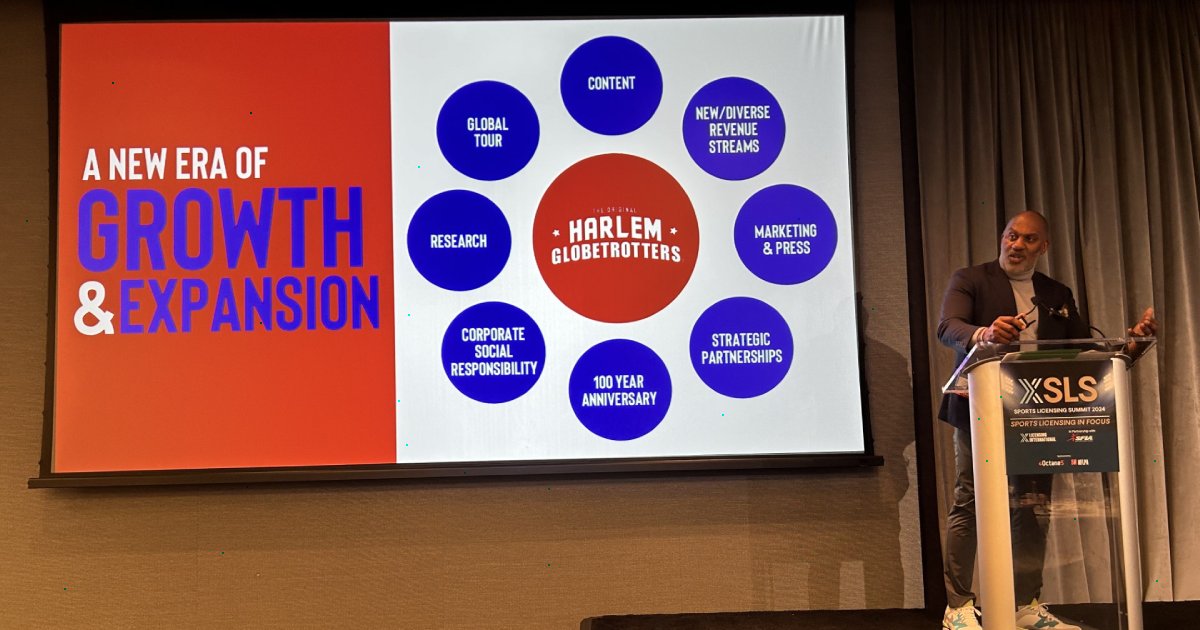Licensing in Play as Sports Participation Increases

As the number of Americans playing sports continues to rise, so too will opportunities for licensing, according to executives at Licensing International’s recent Sports Licensing Summit in New York.
Pickleball, for example, has seen U.S. participation increase 222.5% during the past three years (reaching 13.6 million in 2023, up from 8.9 million the year before), said Tom Cove, President and CEO of the Sports & Fitness Industry Association. Pickleball has spawned four professional leagues, two of which—the Professional Pickleball Players Association and Major League Pickleball—merged earlier this month. And the number of pickleball paddle suppliers jumped from 400 in 2022 to 1,000 last year.
Golf participation jumped 53.1% during the past three years, fueled by a boom during the pandemic. And while these emerging or niche sports continue to expand, basketball (29.7 million), baseball (16.7 million), and soccer (14.1 million) have emerged as the top three participation sports in the U.S.
“Basketball is the only team sport [in the U.S.] that is regularly played informally,” Cove said. “American backyards were not used for pick-up ball before, but they were during Covid, and we made room. Team sports post-Covid are super attractive and that is a passion that licensing can pick up on.”
That passion is increasingly being focused on women’s sports, in particular. Iowa State women’s basketball star Caitlin Clark’s game against Indiana this past weekend, during which she broke the NCAA career scoring record, drew 3.4 million viewers. LSU gymnast Olivia Dunne, meanwhile, has 7.9 million followers on TikTok and earns about $1 million annually from NIL deals, the majority of which are promotions.
In fact, the NCAA’s Name, Image, and Likeness (NIL) program has generated $16 million in revenue for collegiate athletes in the past 18 months, licensing executives said.
In the case of women’s basketball, the WNBA is seeking to forge closer ties to NCAA fans amid the emergence of potential future stars like Clark, the University of Southern California’s JuJu Watkins, and Ball State University’s Hana Muhl.
“We are wholeheartedly focused on who, what, why, and how the NCAA fan is existing and how we can translate that into our business,” said Caiti Donovan, Growth Strategy Lead at the WNBA. “For the longest time there have been low-key efforts to bring the NCAA fan over, but it has not been consistent for merchandise. We are looking at how we understand the core fans and how we are going after the NCAA fans and saying, ‘You can be an WNBA fan as well.’”
At the same time, apparel and other products are being tailored to female fans, who were once overlooked in licensing deals with sports leagues, as well as Gen Z viewers.
Tried-and-true works from a merchandise perspective, said Be Well Brands CEO Rachel Leber, but there are other categories that haven’t been a focus for licensing because they traditionally weren’t big earners from a male-dominated sports perspective. However, category leaders for female athletes and fans can open up new opportunities.
“It is not about pink it and shrink it any longer. Now, you have seen players that bring the female perspective. It is about thinking outside the box and homing in on the target audience,” said Leber, who is also a former NHL licensing executive.
The same also holds true for former athletes looking to connect with younger sports fans, many of whom have relaunched a licensing and endorsement business via social media since retiring.
Former boxer Mike Tyson, for example, has emerged as a top performer on Snapchat, in some cases delivering 150 posts on a given day, said Racquel Douglas, Global Head of Athlete Partnerships at Snapchat. Strong engagement for the average influencer posting on Snapchat includes two minutes of viewing time, but Tyson’s average around four minutes. Former Boston Celtics star Kevin Garnett and NFL star Shannon Sharpe are also focused on connecting with fans on the platform, according to Douglas.
“They have to find a way to connect to Generation Z,” Douglas said. “For Generation Z and Generation Alpha, among the quarterbacks, it is all about [Kansas City Chiefs’] Patrick Mahomes. Tom Brady is still selling his brand and that is his legacy, but he must also be on social media to continue that journey.”




